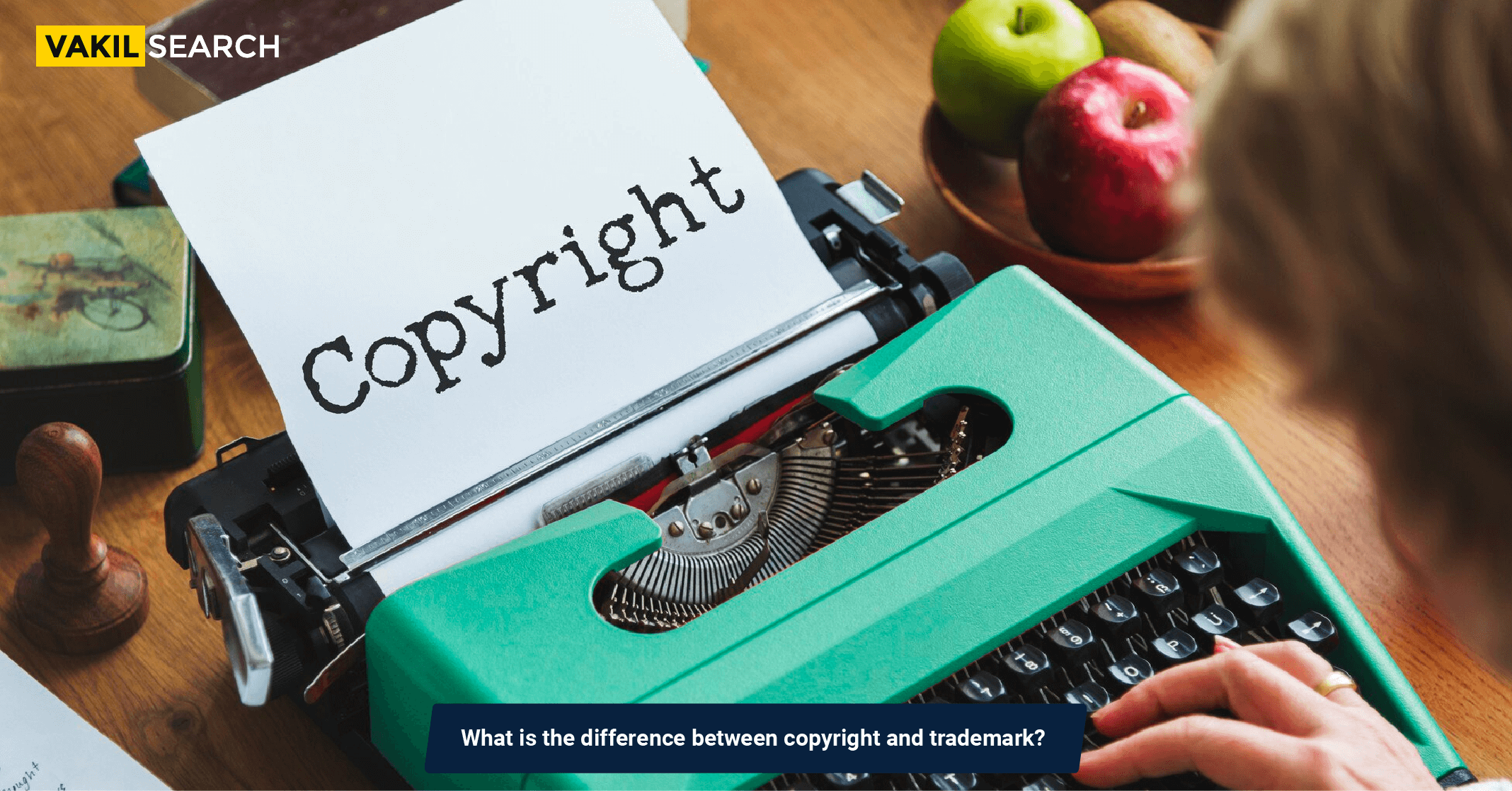Understanding the difference between copyright and trademark is crucial for protecting your intellectual property. Copyright safeguards creative works, while trademarks protect brand identities. Learn more about these distinctions to safeguard your assets effectively.
Introduction
Understanding intellectual property rights is vital for businesses and creators alike, ensuring that their creations are well-protected. Two commonly misunderstood forms of intellectual property are copyright and trademark. This blog aims to talk about the distinctions between the two, highlighting their specific protective measures, what they cover, and the nuances of their registration processes.
Nature of Protection
Copyright:
Purpose: Copyright protects the expression of original ideas in tangible forms. This includes literature, music, films, and software. Copyright ensures that creators maintain exclusive rights to reproduce, distribute, perform, or adapt their work.
Trademark:
Purpose: Trademarks, on the other hand, protect symbols, names, and slogans used to identify goods or services. Their primary role is to avoid consumer confusion, guaranteeing that a product or service is genuine and originates from a specific source.
Eligible Subject Matter
Copyright:
Scope: Encompasses a vast range of creative works. This can include books, paintings, movies, songs, architectural designs, and even software code. The key is that the work must be original and fixed in a tangible medium.
Trademark:
Scope: Trademarks cater to identifiers of commercial origin. This includes brand names, logos, slogans, and even specific colors or sounds associated with a brand. For instance, the unique chime in a popular tech product’s advertisement or a specific shade used by a brand can be trademarked.
Registration Requirements
Copyright:
Procedure: While copyright exists automatically upon the creation of an eligible work, formal registration can offer additional legal benefits. In many jurisdictions, registration is necessary for pursuing statutory damages and attorney’s fees in court.
Trademark:
Procedure: Unlike copyright, the rights to a trademark arise from its actual use in commerce. However, registration is highly recommended. Registering a trademark offers broader protection and makes it significantly easier to enforce trademark rights.
Duration of Protection
Copyright:
Lifespan: Copyright generally lasts for the life of the author plus 70 years, though this can vary based on factors like the type of work and the jurisdiction.
Trademark:
Lifespan: Trademark protection can last indefinitely, provided the mark remains in use and renewal requirements are met (typically every 10 years).
5. Enforcement
Copyright:
Enforcement: Copyright owners can take legal action against unauthorised reproductions, distributions, or adaptations of their work.
Trademark:
Enforcement: Trademark holders can sue entities that use marks that are confusingly similar to theirs, especially if it leads to consumer confusion.
Summary
Here is a table that will give you an idea of the differences:
| Criteria | Copyright | Trademark |
| Purpose | Protects the expression of original ideas in tangible forms such as literature, music, films, and software. Grants creators exclusive rights to reproduce, distribute, perform, or adapt their work. | Protects symbols, names, and slogans that identify goods or services. Ensures products/services are recognised as genuine and originate from a specific source, preventing consumer confusion. |
| Eligibility | Original creative works fixed in a tangible medium (e.g., books, paintings, movies, music). | Brand identifiers like names, logos, slogans, specific colours, or sounds associated with a product or service. |
| Duration | Generally, the life of the author plus 70 years (varies by jurisdiction). | Potentially indefinite, as long as the mark remains in use and is renewed (usually every 10 years). |
| Registration | Exists automatically upon creation, but formal registration offers added legal benefits. | Rights arise from its use in commerce, but registration is recommended for broader protection. |
| Protection against | Unauthorised reproduction, adaptation, distribution, and public performance of the work. | Unauthorised use of confusingly similar marks that could deceive or confuse consumers. |
| Transferability | Copyright can be transferred, sold, or bequeathed to heirs. | Trademarks can be licensed, sold, or used as a security interest in a business transaction. |
| Geographical Scope | Often limited to the jurisdiction where registered, though international treaties can offer broader protection. | Typically limited to regions or countries where registered or used. Some international agreements can simplify registration in multiple jurisdictions. |
| Requirement for Maintenance | Little to no maintenance is required post-registration. | Requires regular use to maintain rights and periodic renewals. Non-use may lead to cancellation. |
Conclusion
While both copyrights and trademarks serve to protect intellectual property, their scopes and methodologies differ significantly. Copyright safeguards the expressions of original ideas, whereas trademarks defend the distinct identifiers of products and services in commerce. Understanding these differences is crucial for businesses and creators, ensuring they leverage the right protection for their work. Always consider consulting with legal professionals for a deeper understanding and accurate guidance.
FAQs on Copyright and Trademark
What's the Primary Distinction Between Trademark and Copyright?
While copyright is designed to protect original expressions of ideas in tangible forms (like literature, music, and films), a trademark serves to protect symbols, names, and slogans associated with goods or services to prevent consumer confusion.
Can I Register My Brand Logo Under Both Copyright and Trademark?
Yes! If a logo is an original artwork, it might qualify for copyright protection. At the same time, as it identifies a brand, product, or service, it can also be trademarked to safeguard its unique association with your business.
How Long Does Protection Last: Trademark vs. Copyright?
Copyright generally offers protection for the life of the author plus 70 years (though this can vary). Trademark protection, on the other hand, can last indefinitely as long as it's regularly used and renewed, typically every 10 years.
Is International Protection the Same for Copyrights and Trademarks?
Not necessarily. While there are international treaties like the Berne Convention that facilitate copyright protections across member countries, trademarks are typically protected within specific regions or nations. However, agreements like the Madrid System can simplify the process of seeking trademark protection in multiple countries.
What Happens if I Don't Register My Work: Copyright vs. Trademark?
For copyright, protection exists automatically upon the creation of an eligible work, but formal registration provides additional legal benefits. For trademarks, while rights can arise from actual use in commerce, registration is crucial for broader, enforceable protection.








